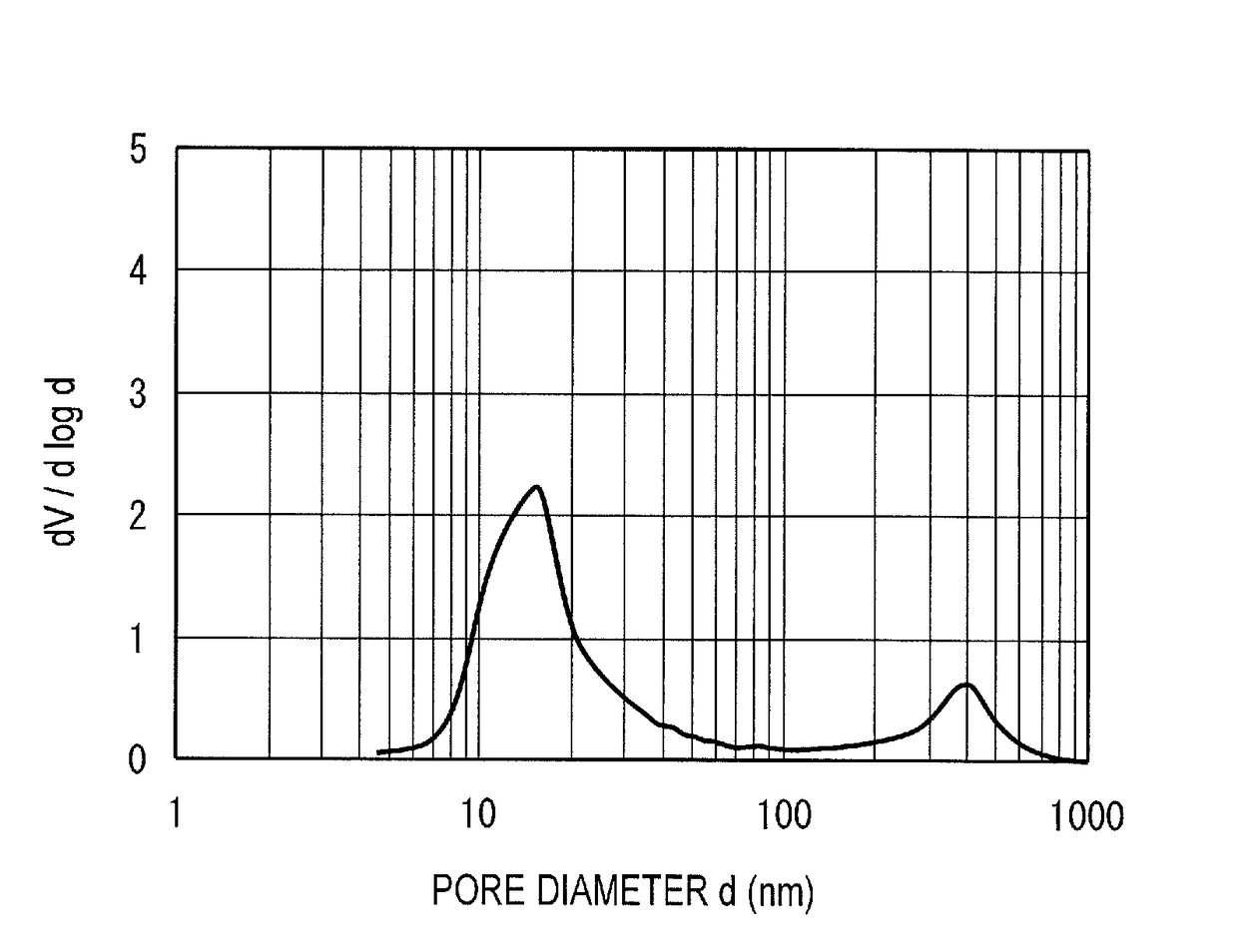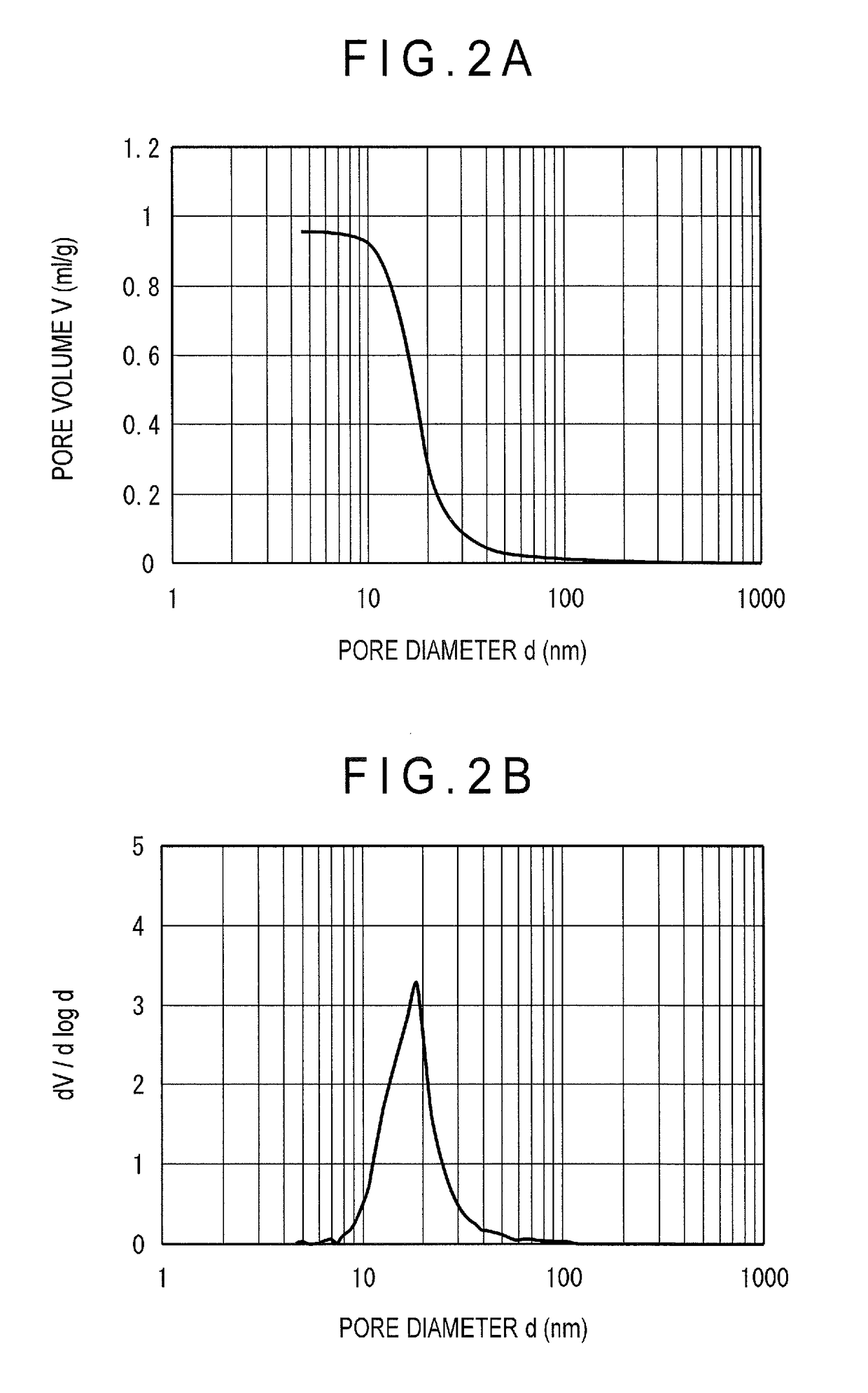Hydrogenation catalyst and method for producing same
a technology of hydrogenation catalyst and catalyst, which is applied in the direction of catalyst activation/preparation, organic compound/hydride/coordination complex catalyst, etc., can solve the problems of high production cost, inability to significantly increase the deasphaltene performance, and ineffective primary reaction pores in the form of mesopores, etc., to achieve excellent demetallization performance and deasphaltene performance, high production cost
- Summary
- Abstract
- Description
- Claims
- Application Information
AI Technical Summary
Benefits of technology
Problems solved by technology
Method used
Image
Examples
example 1
[0056]35.2 kg of pure water was poured in a tank provided with a circulation line having two chemical supply ports. Then, 13.0 kg of aluminum sulfate aqueous solution with a 7 mass % concentration in terms of Al2O3 was added while agitated, and the solution was circulated after the temperature of the solution was raised to 70 degrees Celsius. The pH of the alumina aqueous solution at this time was 2.3. Next, 9.5 kg of sodium aluminate aqueous solution with a concentration of 22 mass % in terms of Al2O3 was added for 180 minutes, while the aqueous solution was agitated and circulated under a constant temperature of 70 degrees Celsius, to obtain an alumina hydrate. The pH after the sodium aluminate aqueous solution was added was 9.5. Next, the obtained alumina hydrate was washed with pure water at 60 degrees Celsius to remove impurities such as sodium and sulfate radical, thereby obtaining a washed cake. Further, pure water was added to the washed cake to adjust the Al2O3 concentratio...
example 2
[0058]An alumina-phosphorus support b was obtained in the same manner as in Example 1 except that 99.4 g of phosphoric acid was added. The support b contained 2 mass % of phosphorus in terms of P2O5 concentration, and 98 mass % of aluminum in terms of Al2O3 concentration (both based on a total amount of the support). A catalyst B was obtained in the same manner as in Example 1 using the support b. The properties of the catalyst B are shown in Table 1. Further, FIGS. 2A and 2B respectively show integral and differential graphs of pore distribution of the hydrotreating catalyst B.
example 3
[0059]An alumina-phosphorus support c was obtained in the same manner as in Example 1 except that 150.7 g of phosphoric acid was added. The support c contained 3 mass % of phosphorus in terms of P2O5 concentration, and 97 mass % of aluminum in terms of Al2O3 concentration (both based on a total amount of the support). A catalyst C was obtained in the same manner as in Example 1 using the support c. The properties of the catalyst C are shown in Table 1.
Comparative 1
[0060]An alumina support d was obtained in the same manner as in Example 1 except that phosphoric acid was not added. A catalyst D was obtained in the same manner as in Example 1 using the support d. The properties of the catalyst D are shown in Table 1.
Comparative 2
[0061]An alumina-phosphorus support e was obtained in the same manner as in Example 1 except that 9.8 g of phosphoric acid was added. The support e contained 0.2 mass % of phosphorus in terms of P2O5 concentration, and 99.8 mass % of aluminum in terms of Al2O3 ...
PUM
| Property | Measurement | Unit |
|---|---|---|
| specific surface area | aaaaa | aaaaa |
| pore diameter | aaaaa | aaaaa |
| pore diameter | aaaaa | aaaaa |
Abstract
Description
Claims
Application Information
 Login to View More
Login to View More - R&D
- Intellectual Property
- Life Sciences
- Materials
- Tech Scout
- Unparalleled Data Quality
- Higher Quality Content
- 60% Fewer Hallucinations
Browse by: Latest US Patents, China's latest patents, Technical Efficacy Thesaurus, Application Domain, Technology Topic, Popular Technical Reports.
© 2025 PatSnap. All rights reserved.Legal|Privacy policy|Modern Slavery Act Transparency Statement|Sitemap|About US| Contact US: help@patsnap.com



